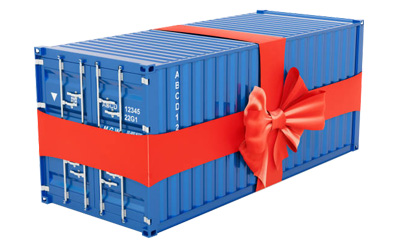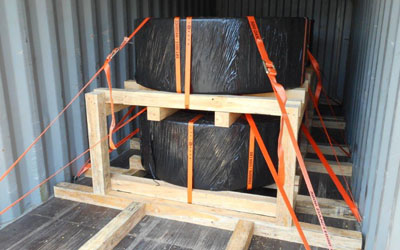Understanding the Factors Behind Ocean Freight Rates
When it comes to ocean freight, understanding the key factors influencing shipping rates is essential. Whether you’re a seasoned importer or just getting started, knowing what drives freight costs can help you make informed decisions. In this article, we’ll explore eight critical factors that play a significant role in shaping ocean freight rates.
1. Shipping Route and Distance
The distance between your pickup location and the final destination is a fundamental factor in determining shipping costs. As a general rule, longer distances translate to higher shipping expenses. However, it’s not just about the miles; the geographic location, transportation infrastructure, and delivery complexity also matter. Shipping to remote or challenging-to-reach locations often results in higher rates.
2. Seasonality & Shipping Costs
 Seasonality is a major influence of ocean freight rates. During peak demand periods, shipping companies can charge premiums due to limited available space. For instance, peak seasons like the lead-up to Christmas, Chinese New Year, or Ramadan witness increased rates as shipping companies capitalize on the heightened demand. Seasonal factors also affect specific cargo types, such as perishable goods, which tend to have higher freight rates when shipped during their peak seasons.
Seasonality is a major influence of ocean freight rates. During peak demand periods, shipping companies can charge premiums due to limited available space. For instance, peak seasons like the lead-up to Christmas, Chinese New Year, or Ramadan witness increased rates as shipping companies capitalize on the heightened demand. Seasonal factors also affect specific cargo types, such as perishable goods, which tend to have higher freight rates when shipped during their peak seasons.
3. Type and Size of Container
The choice of container size and type significantly impacts shipping costs. Larger containers, like the 40′ HC, cost more than smaller ones, such as the 20′ container. Specialized containers, like open-top or reefer containers, also come at a premium due to their unique features. For a full guide on container sizes please see our container specification sheet.
4. Cargo Type
 The nature of your cargo plays a vital role in determining freight rates. Shipping hazardous or special handling goods involves additional costs due to the safety measures and precautions required during transport. Over-sized cargo, which occupies more space and necessitates unique handling, is also more expensive to ship than standard-sized containers.
The nature of your cargo plays a vital role in determining freight rates. Shipping hazardous or special handling goods involves additional costs due to the safety measures and precautions required during transport. Over-sized cargo, which occupies more space and necessitates unique handling, is also more expensive to ship than standard-sized containers.
5. Fuel Cost
 Fluctuations in fuel prices have a direct impact on ocean freight rates. When oil prices rise, shipping companies adjust their rates to cover the increased fuel costs. Conversely, when fuel prices drop, businesses can benefit from more affordable sea freight rates. Staying informed about fuel cost trends is crucial for budgeting and decision-making. You can view Indicative shipping fuel cost ranges on the IEA site the International Energy Agency works with governments and industry to shape a secure and sustainable energy future for all.
Fluctuations in fuel prices have a direct impact on ocean freight rates. When oil prices rise, shipping companies adjust their rates to cover the increased fuel costs. Conversely, when fuel prices drop, businesses can benefit from more affordable sea freight rates. Staying informed about fuel cost trends is crucial for budgeting and decision-making. You can view Indicative shipping fuel cost ranges on the IEA site the International Energy Agency works with governments and industry to shape a secure and sustainable energy future for all.
6. Currency Exchange
Ocean freight transactions often involve multiple currencies, but the U.S. dollar is a common unit of international currency. Consequently, currency exchange rates at the time of the transaction can affect ocean freight rates. Keeping track of currency fluctuations is essential to avoid unexpected cost variations.
7. Service Charges
In addition to the base rates, port  service charges and terminal fees contribute to the overall shipping costs. These charges can vary depending on the origin and destination of your cargo. Terminal handling costs (THC) are a part of these service charges and
service charges and terminal fees contribute to the overall shipping costs. These charges can vary depending on the origin and destination of your cargo. Terminal handling costs (THC) are a part of these service charges and
add to the total expenses.
8. Competition in the Market
Competition plays a pivotal role in determining ocean freight rates. It’s not limited to the number of shipping companies alone but extends to various transport modes. In today’s shipping industry, land transport and services also influence pricing. Carriers often adjust their rates to remain competitive and secure a larger share of the market. This competitive landscape can lead to varying prices, especially when carriers vie for market dominance. SARR Logistics UK have a good relationship and hold a dominant place in the market to be in a position to offer the best rates.
Conclusion
Understanding these eight factors is essential for making informed decisions about your ocean freight shipments. By considering these elements and staying updated on industry trends, you can better navigate the complex world of international shipping and optimize your supply chain. For any further information and updates on rates please contact us SARR Logistics UK








